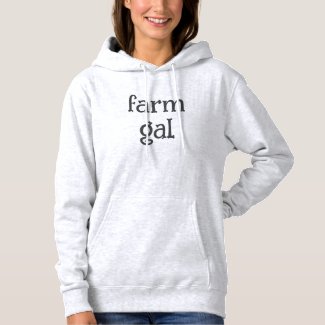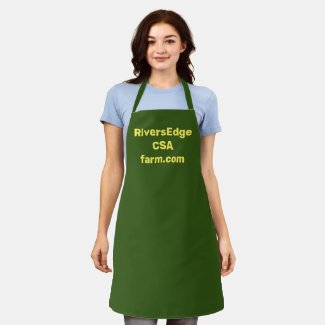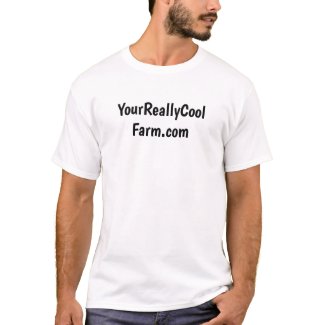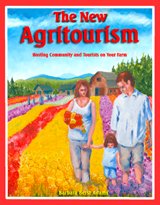About bunnies!
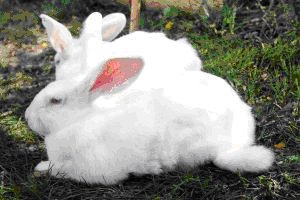 Lazy Angoras
Lazy AngorasAdapted by Amy Rose from article by Barbara Berst Adams in Acres USA
Copyright National Lilac Publishing, LLC
Wondering about Angora bunnies? I originally wrote this article for people who wanted no-kill farm animals -- those that could provide at least a small stream of income while living out their full lifespans in comfortable conditions. Angora rabbits can be happily raised companion animals that double as an agritourism draw for customers to your farm. They can be a source of luxurious angora wool as a raw crop or value-added product. They can also provide organic garden manure or compost as a saleable product (see more on this below.)
We'll also talk about angora breeds and wool production, but first a little about hand-training and health.
Training and healthy rabbit care
Here's something about bunnies many don't know: They need toys and playgrounds for their health! Not just as pampered pets, but their health.They need objects and environments that allow them to mimic their instincts for burrowing, chewing, digging, climbing, and even throwing.
Rabbits can sometimes be very long-term project oriented, which comes from their instinct to dig elaborate underground tunnels that take more than a day to complete. But, rabbits are just like our dogs and cats in that what works for one won't work for another. One example of a low-cost toy for bunnies that like to chew is a cardboard box full of ever-changing non-toxic, non-treated items such as pine cones, un-treated (and non-moldy) old wicker pieces, untreated wood pieces and cardboard tubes. Other rabbits might like old sheets and towels to re-arrange. Rabbits that like to climb may even appreciate a climbing object similar to those for cats (not as high up, rabbits don't necessarily fall as agilely as cats.)
Another thing that holds true about bunnies of all breeds is this: successful rabbit owners feel it may be best to purchase directly from a breeder near you. Debbie and Skip Smith, owners of Iron Horse Farm in Sherborn, Massachusetts, raised English Angoras and explained that they did not ship the offspring due to stress on the rabbits. Another attribute to look for when first purchasing: make sure the breeders handle their rabbits from birth to get them used to human touch and handling, as the regular grooming, shearing and plucking requires a tamed and gentled animal.
Consider non-traditional food sources such as willow tree branches. Proponents of "tree-hay" can be found on various forums including a Facebook community, where people share their knowledge of food for livestock, including rabbits, that comes from trees. Naturally, there are toxic trees, and there are trees that may be non-toxic but too fibrous unless fed in only small quantities. But check in with other rabbit owners who have used tree hay sources and get further details. A single weeping willow tree has the potential to feed many rabbits for two or three seasons of the year. One rabbit owner introduced tender slim leaf covered willow branches a little at a time so they could get used to the new food, then she later fed them larger quantities and said they thrived on it. Other rabbit owners are also adding food safe free choice kelp for a natural source of trace minerals that can't be found in commercial mineral supplements. Though some are grinding it in with other rabbit feed, free choice allows the rabbits to use their instincts to take more or less of the kelp as they need in any given time.
Profit from the versatile wool of the Angora bunny
Wool from the Angora rabbit never seems to go out of style. Angora rabbits are the source of Angora wool (whereas Angora goat wool is called mohair). The special attributes of wool from the Angora bunny lend themselves well to a number of traditional and newer niche markets (more on this below). The rabbits are sometimes called urban sheep because premium wool can be produced in smaller areas.
Unique, Rare Qualities of this Natural Fiber
The hollow structure of Angora bunny wool makes it the lightest known natural fiber. It reportedly has anti-static qualities, which repel dirt, and the Angora bunny has few sebaceous glands that produce grease. The resulting fiber is very clean with no odor.
Although one important thing about bunnies is that they must be groomed regularly, once the wool is harvested, some Angora rabbit owners even say that this harvested wool is "already carded."
Angora is comfortable against the skin for most, absorbing moisture while allowing the skin to breathe and helping the skin's surface maintain a steady temperature. Though reports vary, most research has found Angora wool to be three to seven times warmer than sheep's wool.
It is very durable and hand washable. Angora bunny wool comes in many natural colors including chocolate, fawn, charcoal, black, lilac, chestnut, copper, tortoise, chinchilla (a shade of gray), opal, blue and others including a snowy white wool that takes conventional and natural dyes extremely well. (Colors labeled "blue" and "lilac" of course are earthy natural shades hinting at those colors -- not bright blues or lilacs as what comes from artificial dye.)
Wool rabbits must be trained
If you plan
to raise angora rabbits for their wool, they need to trust their
handlers for regular brushing and wool harvesting. One thing owners discover about bunnies right away is that not only do they have temperaments
far different than cats and dogs, but as mentioned, each rabbit is different than any other.
Harvesting the wool
Most breeds shed their underwool naturally one to four times a year, which is when they are 'plucked' or hand picked, meaning the gentle removal of the long, naturally shed wool from their coats. Plucking allows more of the soft, fine fibers to be harvested rather than mixing it with the coarser fibers that are more often included in the sheared wool harvest, creating a rare and luxurious product for market.
Angoras can
also be successfully shorn, with the Giant or German
Angora (see below) being especially good for this. Wool from regular brushings in between shedding
is also collected.
Choosing between shearing and plucking depends on what you plan
to do with the wool.
Thoughts from a successful Angora bunny micro farmer
Tulasi Kilgore is an award-winning handspinner and was owner of Wooly Wabbit(T) Farm of Helena, Montana. She prefered to work with three-inch to four-inch hand plucked wool. "Shearing creates blunt ends to the fiber, which makes the fiber hard to spin, plus the yarn will not stay twisted," she said. "Also, shearing produces 'second cuts' creating very short pieces of fiber that will not stay in the yarn." She said that if you are handspinning Angora, it's best to hand pluck the longest clean parts of the fiber, and shear the shorter spots.
Fiber that comes from combing, brushing, and shearing can be used for blending with other fibers for spinning, or felting. "Wools of other animals tend to have more of a 'bounce' or spring to them than Angora," she said, "which has a relaxed texture, so Angora can also be successfully blended with other fibers such as mohair or very fine lambs' wool to combine their attributes into a unique product."
Niche Markets: Old-fashioned hand-spun vs. machine and mass produced
The mass production of Angora bunny wool has had its peaks and valleys worldwide, but Angora wool seems to find ongoing success in local and regional niche markets.
Angora wool alone is usually sold by the ounce, with prices depending on the grade and other value-added components (such as the wool coming from hand-tended animals, or allowing customers to visit the rabbit farm, which tends to add to the appreciation of the fiber as most agritourism does). Bred for centuries as a specialty and luxury wool, Angora wool products have long been considered 'boutique' because of the wool's high price.
Angora products created from hand-spun yarn are reported not to shed as machine spun yarn does, and create a "luxurious fur halo" that machine spinning cannot mimic. In the more luxury and fashion-oriented arena, sweaters are even custom-made in prices ranging into hundreds of dollars for each sweater, exalting the beautiful liveness of the fiber and soft, satiny halo and feel. Christening gowns, baby booties and artist-designed adult garments find niche markets.
Along with luxury, Angora bunny wool now claims the attention of those looking towards natural and humanely raised fibers and unique handcrafted arts and crafts items. The wool of the Angora bunny lends itself well to local or shared-interest groups such as catalogs catering to natural fiber unique children's clothing or local bed and breakfasts and country inns that not only utilize natural fiber blankets, but will sell them to travelers who value locally produced crafted goods.
The natural
health movement can be approached with unique items such as Angora
covers for neck rolls, slippers and heating pads, and all-natural
cuddly toys, garments and blankets for babies and pets.
Because of Angora bunny wool's extra warmth, breathability, and comfort against the skin, it makes an ideal fiber for specialty sport and outdoor next-to-the-skin thermal wear. Boutique and specialty shops and catalogs offer mittens, gloves, socks, slippers, insoles, undershirts, leggings, wrist warmers, scarves and the like which are sold to customers across the globe.
Two more
attributes about bunnies you might profit from
Angora bunnies easily add to the appeal of farms that profit from agritourism, even if angora wool isn't the main crop from the farm. Everyone loves bunnies, and Angoras must be people-friendly livestock considering how often they are handled by their owners for grooming. Always kept clean and healthy, as mentioned above, they create strong customer draw. Some people will even pay for workshops about bunnies and their care.
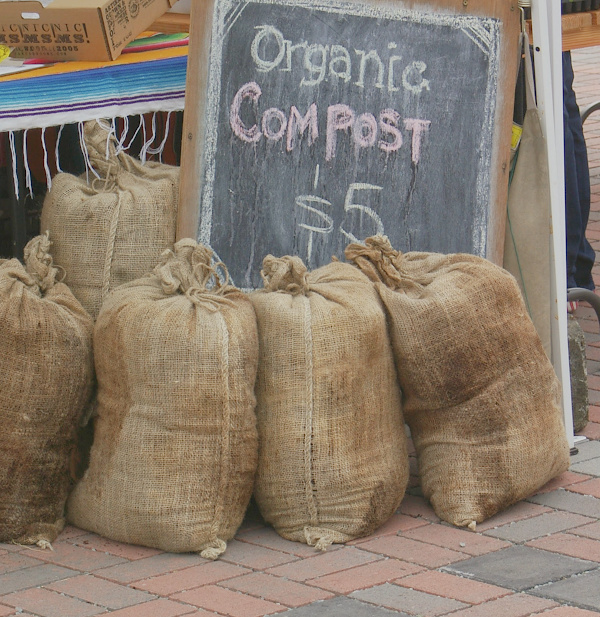
Their droppings make excellent compost material or food for worm castings, and in fact, Merry Fischer of Washington State made rabbit manure worm castings a sideline business. She sold bags of it at farmers' markets and larger outdoor plant sales, collecting the manure from other rabbit breeders in her area who are glad to have it removed, and placing in her worm beds. (Make sure any alfalfa or other food you supply your rabbits with hasn't come from herbicide-sprayed fields. Herbicide carry-over can produce compost that will destroy gardens.)
Angora bunny breeds
English Angora
The English Angora is the smallest of the Angora bunny breeds and produces the finest fiber, which is very soft, long and thick. The long body fibers also grow on the face and ears of the rabbit. The English produce both white and natural colors with little 'guard' hair, which some fiber artists prefer. Owners report that this breed is more docile than the other Angora breeds. The guard hair helps keep the wool from matting, and so the English Angora tends to need more brushing and grooming than those with more guard hair.
French Angora
The French breed does not have the thick wool on the head, face, ears or front feet. The French Angora bunny's body, however, produces a fiber considered excellent for handspinning. The French Angoras have a slightly higher percentage of guard hair to underwool than the English, so they need less grooming. Their wool also comes in a wide assortment of colors.
Giant (German) Angora
The Giant Angora bunny was accepted as a distinct breed in the late 1980s and has similar characteristics to the original German Angora it was bred from. We've described them together, here, although some groups consider the German Angora rabbit a completely separate breed from the Giant. The German and Giant Angoras are large, sometimes twice the weight of the English Angora. Their wool is white, and the densest of all breeds with a double undercoat that, unlike the other breeds, rarely molts naturally, sometimes only once a year. Therefore, it is more often sheared rather than plucked. Colored Giants have been considered crossbreeds, but some breeders are working towards perfecting purebred colored Giants.
Satin Angora
The English, French and Giant (German) Angora rabbits are believed to have all originated from a common European Angora rabbit. But in Canada, a breeder named Mrs. Leopoldina Meyer noticed a slightly longish haired bunny among a litter of otherwise normal shorthaired Satin rabbits. She bred this Satin rabbit to a French Angora bunny creating offspring with a wonderful sheen to the wool. The breeding continued, and in 1987, the Satin Angora was recognized as a distinct breed. With wool that's considered rare, luxurious and premium, breeders do caution that the Satin Angora also produces the least amount of wool so far than the other breeds, and needs much grooming to keep it tangle-free. The rabbit itself is medium-sized.
The colors and shine of the Satin Angora bunny are quite brilliant, reportedly due to the structure of the hair shaft, which is translucent with the color pigments inside of the hair. The shaft reflects light making the resulting yarn look like spun glass. The diameter of each hair is also smaller than some other Angora breeds, and users report it looks and feels like silk. Although it varies, some owners who specialize in this breed pluck the Satin Angora twice a year.


